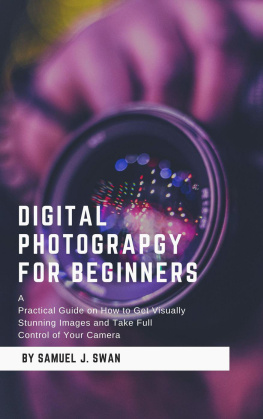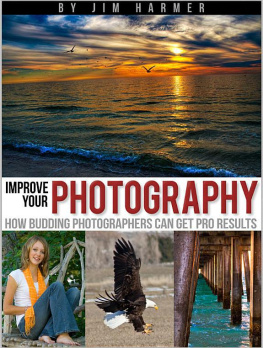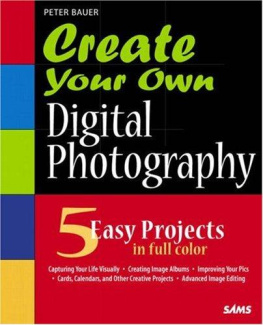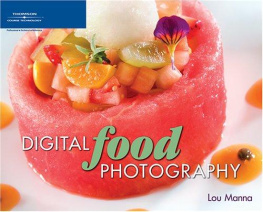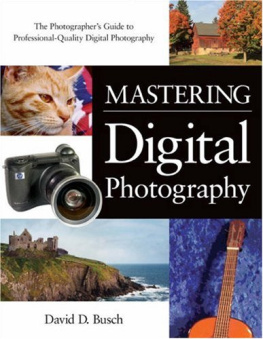Zen and the Magic
of Photography
Learning to See and to Be through Photography
Wayne Rowe
Wayne Rowe ()
Editor: Gerhard Rossbach, Production Editor: Joan Dixon, Copyeditor: Cynthia Anderson
Layout and type: Cyrill Harnischmacher, Cover design: Helmut Kraus, www.exclam.de
Cover photos: Wayne Rowe, Printer: Friesens Corp.
Printed in Canada
ISBN 978-1-933952-54-3
1st Edition
2010 Wayne Rowe
Rocky Nook, Inc.
26 West Mission Street, Ste 3
Santa Barbara, CA 93111-2432
www.rockynook.com
Library of Congress Cataloging-in-Publication Data
Rowe, Wayne.
Zen and the magic of photography :
learning to see and to be through photography / by Wayne Rowe. -- 1st ed.
p. cm.
Includes bibliographical references.
ISBN 978-1-933952-54-3 (alk. paper)
1. Photography--Psychological aspects. 2. Composition (Photography) I. Title.
TR183.R69 2010
770.1--dc22
2009048812
Distributed by OReilly Media 1005 Gravenstein Highway North Sebastopol, CA 95472
All product names and services identified throughout this book are trademarks or registered trademarks of their respective companies. They are used throughout this book in editorial fashion only. No such uses, or the use of any trade name, are intended to convey endorsement or other affiliation with the book. No part of the material protected by this copyright notice may be reproduced or utilized in any form, electronic or mechanical, including photocopying, recording, or by any information storage and retrieval system, without written permission of the copyright owner. While reasonable care has been exercised in the preparation of this book, the publisher and authors assume no responsibility for errors or omissions, or for damages resulting from the use of the information contained herein.
Unless otherwise noted, all photographs and illustrations are by the author.
This book is printed on acid-free paper.
To Yvone, my wife, whose irrepressible joie de vivre profoundly touches and influences my life
Acknowledgments
I would like to express my appreciation to the following people:
Rodney Azarmi, Art Suwansang, and Richard Wong for their support for this book from its beginning; Walter Wells for his incisive analysis of the manuscript and for his constant push to get this book published; Michael Shulman, Director of Publishing, Broadcast and Film, Magnum Photos; Ronald Pledge of Contact Press Images; Jessica Licciardello of George Steinmetz Photography; Alex and Victoria Haas of the Ernst Haas Studio in New York; Martha Winterhalter, Publisher, American Cinematographer Magazine; Dave McCall of the British Film Institute; Professor Leo Braudy of the University of Southern California; Arthur Rothstein and the Library of Congress; Jeff Burak, Director of Business Development, LIFE.com; Katherine Tannian and Joelle Sedlmeyer of Getty Images; Regina Feiler of Time Life; Rich Kallan and Glenn Rand for introducing me to Rocky Nook; Jimi DeRouen, Joan Dixon, and the design staff at Rocky Nook; and most importantly, Gerhard Rossbach, Publisher of Rocky Nook, for believing in my manuscript and giving it a life of its own.
To my brother Dennis for his portrait of me taken in Italy with his trusty iPhone.
To Yvone, my wife, for all that she is and has done for me over the years to make this book a reality.
Wayne Rowe
November 2009
Los Angeles
Introduction
Photography is a universal language spoken by people throughout the world. The problem is that few of us speak this language well. Although people take billions of photographs each year, most of us cannot tell the difference between a good and bad photo. What are the characteristics of a good photograph? How can you make visible the invisible elements it may contain? How can you improve the quality of your own photography? How can you become a better photographer?
Becoming a better photographer first means mastering the principles of camera operation, lighting, and composition. To add to your repertoire of technical photographic skills, you can attend workshops and seminars, enroll in college photography courses, study technical photography books, and get hands-on practical experience. Whether you use a pinhole camera or a state-of-the-art digital single lens reflex (DSLR) camera, the fundamental principles of camera operation are the same. You need to understand and deal with the concepts of shutter speed, f/stop, and ISO. However, mastery of camera operation and photo equipment alone does not guarantee good photographs.
Becoming a better photographer also means developing your visual awareness, sensitivity, and intuition. Your knowledge of how to operate a camera must be combined with your knowledge of how to see. The hands-on skill needed to record an image is one thing; selecting what to record is another that depends upon your state of awareness, your connection with real moments and your connection with the Now. Photographer Joel Meyerowitz put it best: Photography records what awareness observes.
Zen and the Magic of Photography will help you improve your visual awareness and the quality of your photography by helping you discover and experience the points of intersection and merging between photography and Zen, between the camera and real moments, between seeing and beingthe point at which all such distinctions no longer exist; the point at which photography and Zen are one. This is the point where we discover and create our best photographic images.
also shows you how to make the invisible visible through the art of photographic analysis.
extends the connections between photography and Zen, between seeing and being, to the photographic image in all its formsfrom the still photograph to the motion pictureand discusses some concepts common to all forms of the photographic image.
uses photographic examples to illustrate the point of merging between photography and Zen as experienced by the author.
Zen and the Magic of Photography is offered as a tribute to photography. I have personally experienced the magic of photography and was motivated to share what I have learned with others. During the process of writing this book, I revisited the work of many different photographers, among them Manuel Alvarez Bravo, Ernst Haas, Joel Meyerowitz, Sebastio Salgado, Dennis Stock, and Minor White. Their images or thoughts about photography appear as support for my own approach to visual awareness. I include them as a way of pointing out the fact that we photographers share similar feelings and experiences when we discover, create, and capture images.
Experiencing the relationship, the interaction, between Zen and photography has given me an orientation to the world, a visual awareness, a way to get more out of life, and a way to taste and savor the reality of the momentthe Now. It has taught me how to seeand, ultimately, through seeing, how to be. I trust that it can do the same for you.
Gondolier and Church Steeple. Venice, Italy
Part I
Experiencing Zen through Photography and Photography through Zen
The more you actively look, the more the action will become intuitive and natural, subconscious and effortless. With practice, your eye will be intuitively and subconsciously drawn to the light, and the light will be drawn to your eye.


